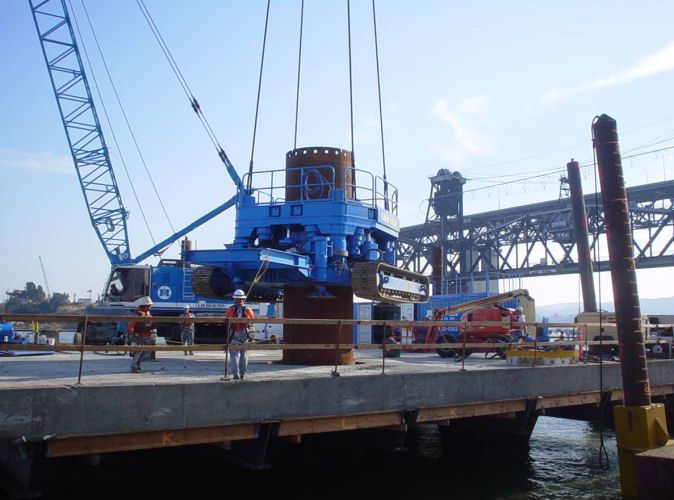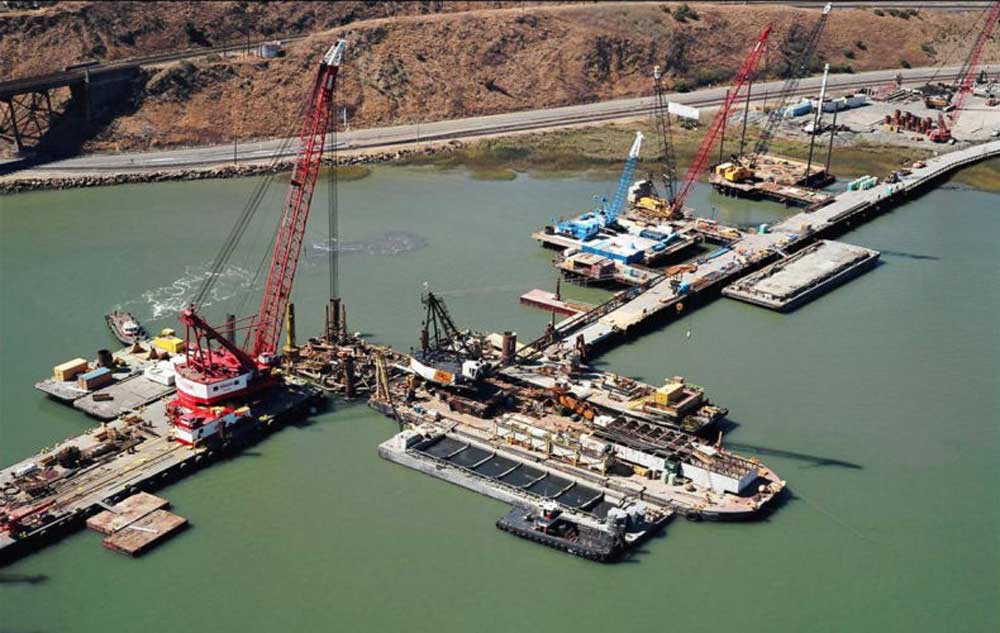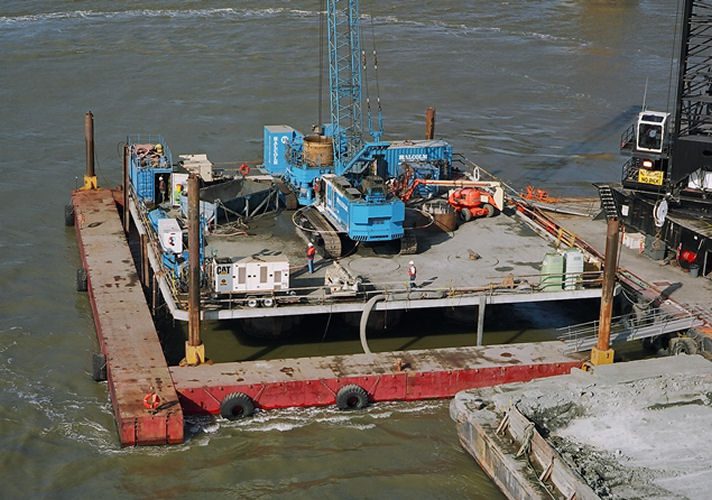Deep Foundations at the Benicia-Martinez Bridge
Construction of the I-680 bridge over the San Francisco Bay at the Carquinez Strait between the cities of Benicia and Martinez in California was delayed for more than a year due to constructability challenges relative to the specified rock socket excavation techniques. Permanent steel casings were installed to depths of over 60 feet, through the water and soil into bedrock. The sedimentary bedrock underlying the project location consisted of intensely fractured rock with very steep fracture angles along with zones of fresh more competent rock with unconfined compressive strengths in excess of 5,000 psi. The contract specified the use of polymer drill slurry to stabilize the sidewalls of the rock socket but this technique proved ineffective in the highly fractured rock zones. “Drill and Fill” shaft construction (technique of replacing voids created by rock socket cave-ins with concrete) did not facilitate the completion of the rock sockets.
Malcolm was added to the project team for its unparalleled experience in oscillator/rotator construction and its state-of-the-art equipment fleet, to get this project on track and advance the construction of the bridge. Work platforms were installed on top of the 8 permanent casings located at each bridge pier location. Two equipment spreads each comprised of a duty cycle dig crane and a 3.0 meter Leffer Rotator working simultaneously for 22 to 24 hours a day in order to prevent further delays to the construction schedule. Fully cased excavation of the rock sockets was made possible by the tremendous amount of torque (3 million ft-lbs) and down pressure supplied by the rotator. Carbide drill teeth installed at the tip of the temporary casing permitted the casing to remain ahead of the socket excavation at all times during construction. The drilled shaft rebar cages were constructed with an internal support system making them free standing allowing for easier concrete placement while extracting temporary casing. Concrete for the drilled shafts was delivered to the work platform by barge.




